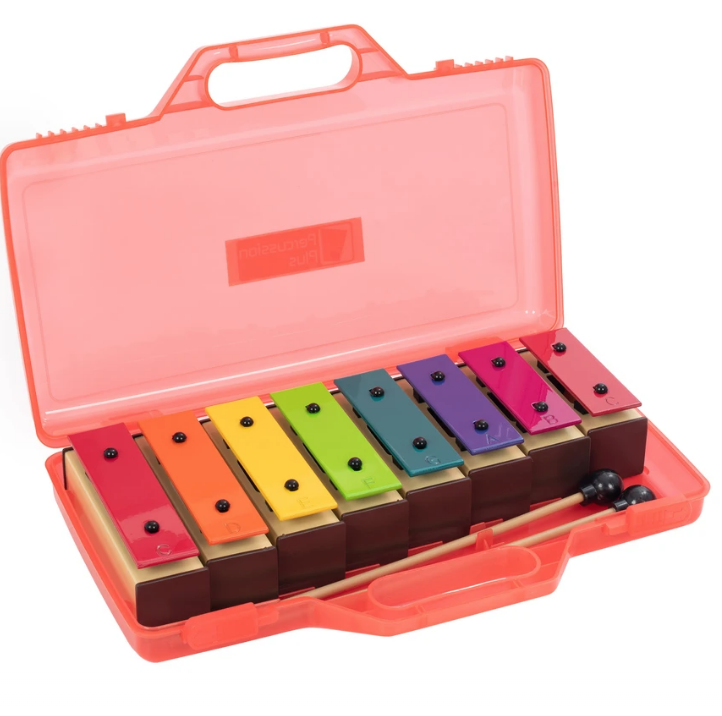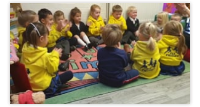Ourselves & Our Friends Level: Early Grades - Creative music
Music Lesson Description
Do you like copying games?
Here's Maestro the Music Dog playing a copying game with his new friend, Coppie the Cat.
- All Maestro the Music Dog materials ©E-MusicMaestroPublishing Limited
- Original watercolors and story: Sandy Holland
- Original music: Peter Noke
Copy Cats
Number Copy Cat (rhythm, dynamics)
Begin with clapping, asking the children to copy you (eg you clap twice - they clap twice, you clap once - they clap once). Then transfer this to other body sounds eg stamping. Next, this can transfer to untuned instruments (eg wood block, shaker), asking the children to copy the way you make the sounds. If they manage this easily, try varying between louder sounds and quieter sounds too (the term for louder/quieter is dynamics).
Name Copy Cat (rhythm)
Model how to clap the rhythm of your own name (eg Fiona = clap clap clap, Miss Jones = clap clap). Next, go round the group in a circle - say, then clap each child's name. The child claps their own name and everyone joins in. The children might notice that several names have the same number of claps.
Untuned instrument Copy Cat (timbre)
This is a music corner activity that needs an adult's help. The idea is to explore the sound (or timbre) of the instruments Put out pairs of the same instruments eg two wood blocks, two drums, two shakers.
First let pairs of children experiment to hear the different sound the instruments make. To introduce the word, timbre in context, you can say, 'The wood block has a different timbre from the drum - listen to how different they sound!' Next see if the children can guess which instrument you play if they cover their eyes.
Help Child 1 to say and play their name (Lyndsay = tap tap) on the wood block. Child 2 copies on the other wood block.
Child 2 says and plays their name on the drum (Jack Fazoli = bang bang bang bang). Child 1 copies on the other drum.

Chime Bar Copy Cat (pitch)
This is a pairs or small group activity, needing an adult. Put out any two different chime bars (C and G OR D and A, so they sound very different) in the music corner. If the chime bars are in a case, it's best to take the two out. First model for the children how to play a chime bar with a beater - the beater needs to bounce off the bar otherwise it will clunk instead of chime!
When the children have their go, it's a great opportunity to say, 'That chime bar has a higher pitch and this one has a lower pitch!' Ask which of the chime bars sounds lower and which sounds higher - the long ones sound lower than the shorter ones. It's important that the children understand that the size makes the difference, not the color!
1/ Child 1 plays the two chime bars in any order. Child 2 copies what they do. Then swap over.
2/ Child 1 plays the two chime bars in any order. Child 2 covers eyes or turns away then guesses and copies what Child 1 did. Swap over.







